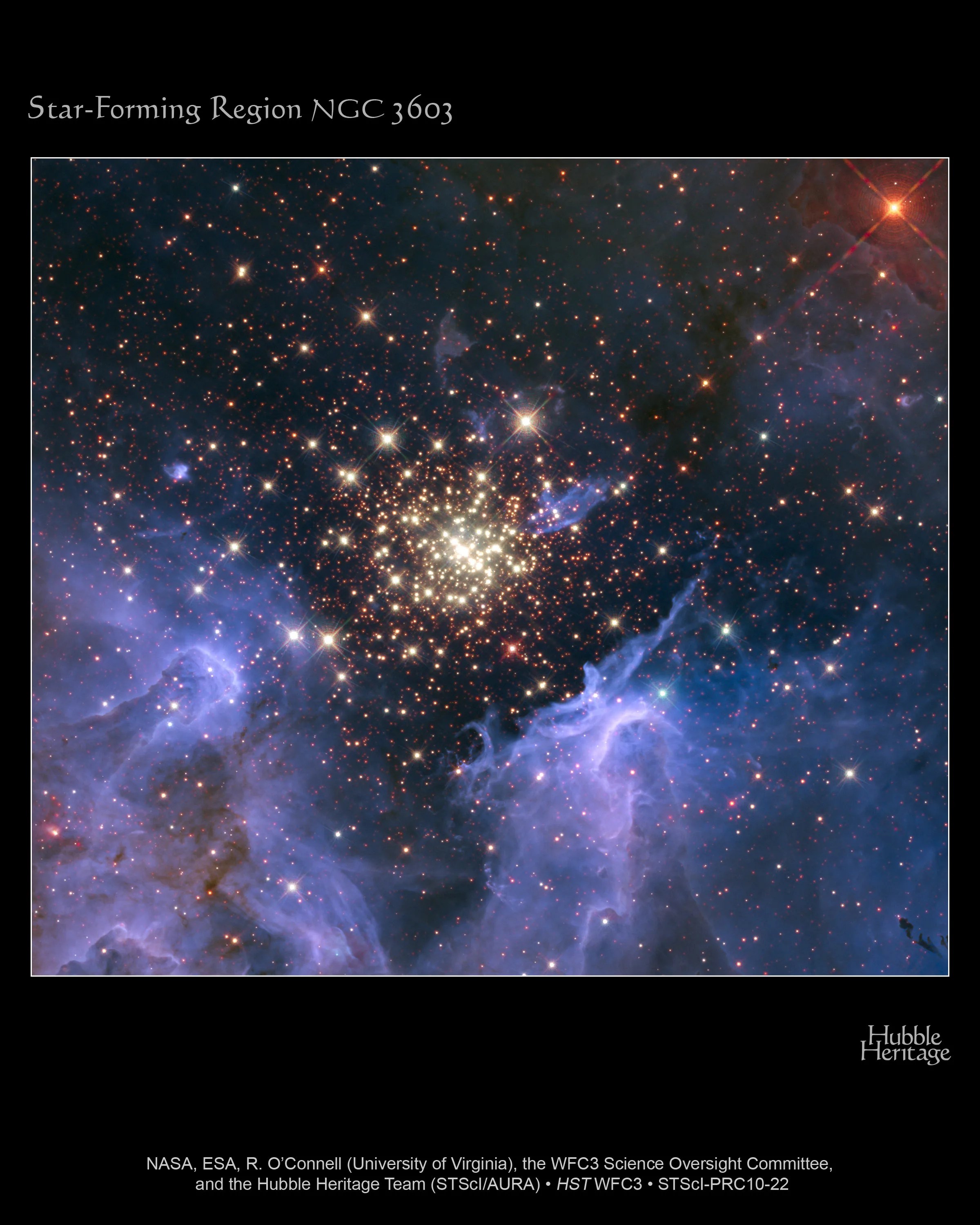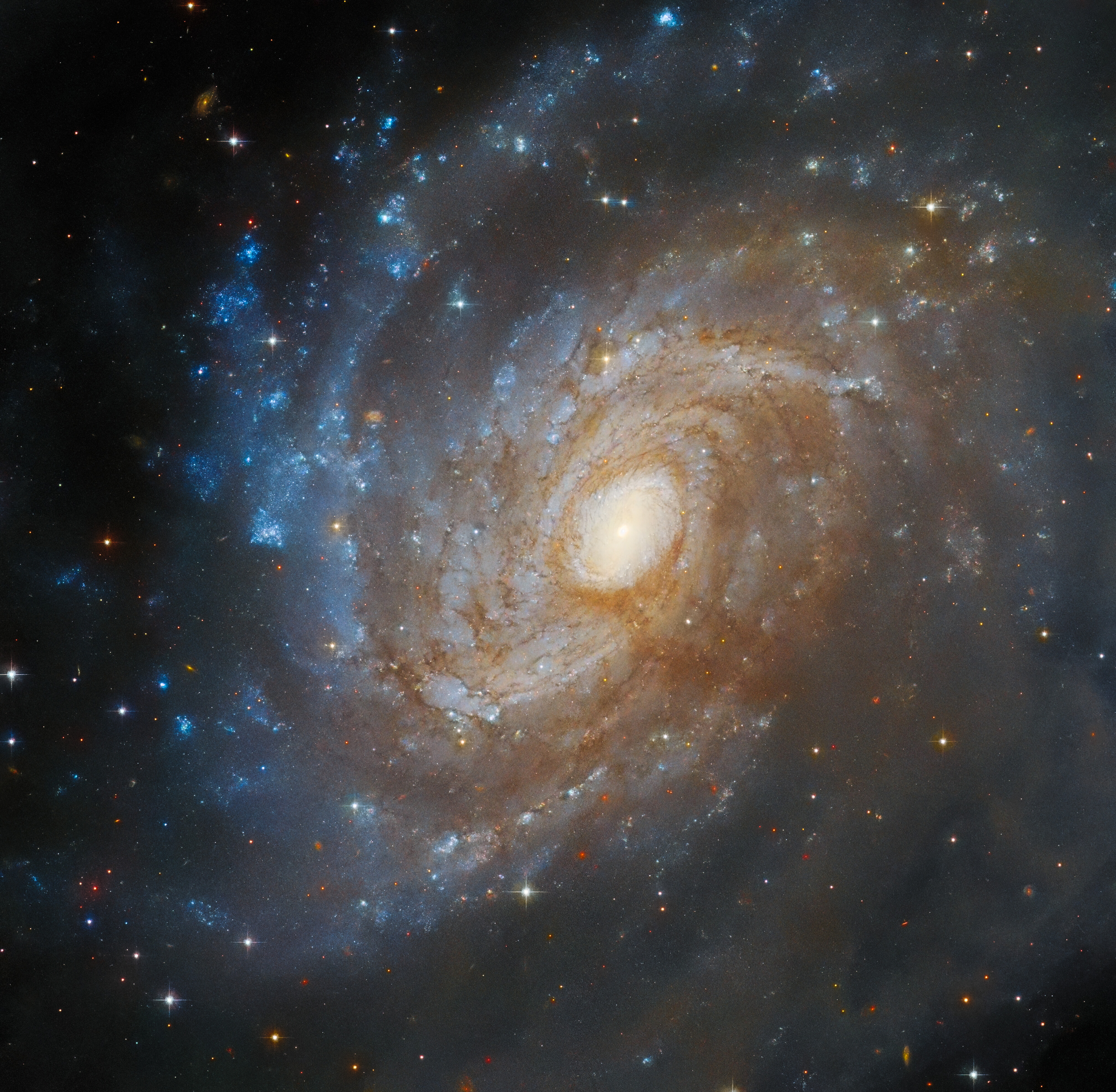2 min read
Credit: NASA, ESA, R. O'Connell (University of Virginia), F.Paresce (National Institute for Astrophysics, Bologna, Italy), E.Young (Universities Space Research Association/AmesResearch Center), the WFC3 Science Oversight Committee, andthe Hubble Heritage Team (STScI/AURA)
Like a July 4 fireworks display a young, glittering collection ofstars looks like an aerial burst. The cluster is surrounded byclouds of interstellar gas and dust - the raw material for newstar formation. The nebula, located 20,000 light-years away inthe constellation Carina, contains a central cluster of huge, hotstars, called NGC 3603.
This environment is not as peaceful as it looks. Ultravioletradiation and violent stellar winds have blown out anenormous cavity in the gas and dust enveloping the cluster,providing an unobstructed view of the cluster.
Most of the stars in the cluster were born around the sametime but differ in size, mass, temperature, and color. Thecourse of a star's life is determined by its mass, so a cluster ofa given age will contain stars in various stages of their lives,giving an opportunity for detailed analyses of stellar life cycles.NGC 3603 also contains some of the most massive starsknown. These huge stars live fast and die young, burningthrough their hydrogen fuel quickly and ultimately ending theirlives in supernova explosions.
Star clusters like NGC 3603 provide important clues tounderstanding the origin of massive star formation in theearly, distant universe. Astronomers also use massive clustersto study distant starbursts that occur when galaxies collide,igniting a flurry of star formation. The proximity of NGC 3603makes it an excellent lab for studying such distant andmomentous events.
This Hubble Space Telescope image was captured in August2009 and December 2009 with the Wide Field Camera 3 inboth visible and infrared light, which trace the glow of sulfur,hydrogen, and iron.
The Hubble Space Telescope is a project of international cooperation between NASA and the European Space Agency. NASA’s Goddard Space Flight Center manages the telescope. The Space Telescope Science Institute (STScI) conducts Hubble science operations. STScI is operated for NASA by the Association of Universities for Research in Astronomy, Inc. in Washington, D.C.








